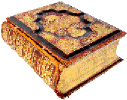The religious and genial effect of Jupiter turns Neptune to a warmer shade of blue. Thus we find a kindly, easy-going humanitarian style of mysticism in such men as Colonel Olcott, Petrarch and Lord Lytton who had these two planets sextile. (In the case of Petrarch a square aspect of Sol and Luna tinged his work with the insight of realism, the quartile is admirable to strip off illusion, and the semi-sextile of Saturn added the; austerity and purity which we praise .) In the horoscope of Shelley, Mars and Jupiter are
both conjoined with Neptune in the ninth house. It is not saying too much to affirm that Shelley created the ‘religion of humanity’. Mars and Jupiter conjoined give more force than any other combination, and we must contrast Shelley with J.P. Morgan, (1837·1913), in whose nativity they are in opposition to Neptune. One shows the power of ideals, the other the power to work against them. Similarly, without Mars we find Maeterlinck, a flabby pseudo-mystic, a humbug, an amateur, the internal soul of Neptune at issue with its vestment Jupiter; religion robbed of its essence and become a vampire. Yet had only Mercury lent aid, he might have been at once the greatest of poets and the greatest of religious teachers.
The square aspect is not so exhausting. It gives tremendous realism in religion and statesmanship or in ethical teaching whether through art or directly. Thus we find Zola (expressing himself in art owing to the semi·sextile of Venus) as a builder of social theories based on ruthless realism. Yet that realism, unknown to itself, is founded on a thoroughly romantic idea. The railway engine in La Bête Humaine and the still in the L’Assommoir, are much more symbolic than anything in Ibsen or Wagner. They live and move and have their being and the characters of the story are
puppets in their hands.
The same criticism applies to the work of Pico de Mirandola, who had the same aspect, as had Cecil Rhodes and Brigham Young, who both strove to fashion empires, each in his own way, one with a new religion, the other with money. Each had the romantic aim; each had the realistic, even brutal method (Rhodes’ trine of Sol gave him added glory, wealth and success).
Turning to friendlier aspects, we note Lewis Carroll, whose semi-sextile of Venus (in the Ascendant) added to the semi·sextile of Jupiter, made him not only a religious artist, but a lover of children. (The pettiness of the aspects is, however, a limitation. It is almost safe to say that no horoscope is really first rate without good aspects or strong positions of the male planets Sol, Mars or Saturn. Jupiter is too comfortable to move the world alone; he likes things as they are.)
Of the trine aspect we have one shocking example. The rising Moon of Alfred Dreyfus was squared by Mars, and Saturn in the seventh house afflicted Neptune in the Ascendant, a mundane opposition and a close aspect of 150 ° But the frightful calamities brought about by these positions were counteracted in the end by the trine of Jupiter to Neptune.
To return to our opening remark on the warmth and colour of the soul on whom these planets throw harmonious ray’, we have two supreme examples of the trine aspect, Johann Wolfgang Goethe and J.M.W. Turner. Compare these with the nativities already cited in regard to the trine of Saturn and note the larger humanity and less strictness. Each master of his art in an equal degree to Michael Angelo and Pasteur, yet both more vivid, more all-embracing, less single-minded. It will depend largely on one’s own horoscope as to which pair one chooses as more useful to humanity; but to any intelligent mind the nature of the difference is obvious, and consideration of the point is extremely instructive as illustrating the disparity between Jupiter and Saturn in their influence on Neptune.
 AstroLibrary 🔎
AstroLibrary 🔎